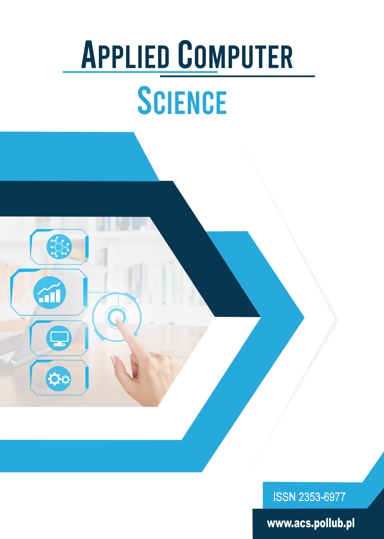REVIEW OF THE DATA MODELING STANDARDS AND DATA MODEL TRANSFORMATION TECHNIQUES
Leszek JASKIERNY
leszekj@agh.edu.plAGH University of Science and Technology, Faculty of Electrical Engineering, Automatics, Computer Science and Biomedical Engineering, Department of Computer Science, (Poland)
Abstract
Manual data transformations that result in high error rates are a big problem in complex integration and data warehouse projects, resulting in poor quality of data and delays in deployment to production. Automation of data transformations can be easily verified by humans; the ability to learn from past decisions allows the creation of metadata that can be leveraged in future mappings. Significant improvement of the quality of data transformations can be achieved, when at least one of the models used in transformation is already analyzed and understood. Over recent decades, particular industries have defined data models that are widely adopted in commercial and open source solutions. Those models (often industry standards, accepted by ISO or other organizations) can be leveraged to increase reuse in integration projects resulting in a) lower project costs and b) faster delivery to production. The goal of this article is to provide a comprehensive review of the practical applications of standardization of data formats. Using use cases from the Financial Services Industry as examples, the author tries to identify the motivations and common elements of particular data formats, and how they can be leveraged in order to automate process of data transformations between the models.
Keywords:
Business standards, Interoperability, Canonical Data Models, Graphs, Graph Databases, Graph TransformationsReferences
ADRM Software. (2018, August 1). Business Area Data Models. Retrieved from http://www.adrm.com/data-model-business-area.html
Google Scholar
Angles, R., & Gutierrez, C. (2008). Survey of graph database models. New York, USA: ACM.
DOI: https://doi.org/10.1145/1322432.1322433
Google Scholar
Bray, T., Paoli, J., Sperberg-McQueen, C. M., Maler, E., & Yergeau, F. (2008). Extensible Markup Language (XML) 1.0 (Fifth Edition). Retrieved from https://www.w3.org/TR/xml
Google Scholar
Cortet, M. (2014). Access to the Account (XS2A): accelerating the API-economy for banks? Retrieved from https://innopay.com/blog/access-to-the-account-xs2a-accelerating-the-apieconomy-for-banks
Google Scholar
Holman, K. (2018). OASIS Universal Business Language (UBL) TC. Retrieved from https://www.oasisopen.org/committees/tc_home.php?wg_abbrev=ubl ISO 20022. (2018, August 1). Universal financial industry message scheme. Retrieved from https://www.iso20022.org
Google Scholar
Kotulski, L. (2013). Rozproszone transformacje grafowe. Kraków, Poland: Wydawnictwo AGH.
Google Scholar
McKnight, W. (2014). IBM Industry Data Models in the Enterprise. Retrieved from https://www01.ibm.com/software/data/industry-models/
Google Scholar
Roman, D. (2006). Canonical Data & Process Models for B2B Integration. Retrieved from http://ceur-ws.org/Vol-170/paper3.pdf
Google Scholar
Skinner, Ch. (2015). How will Banks organise themselves to manage APIs built for PSD2/XS2A?
Google Scholar
Retrieved from http://thefinanser.com/2015/11/how-will-banks-organise-themselves-to-manageapis-built-for-psd2-xs2a.html/
Google Scholar
Sleger, G. (2010). Data Transformation Mapping – Can it be Automated? Retrieved from https://www.cleo.com/blog/data-transformation-mapping-can-it-be-automated
Google Scholar
SWIFT. (2018, August 1). Financial messaging services. Retrieved from https://www.swift.com/aboutus/discover-swift/messaging-standards
Google Scholar
Thompson, H. & Lilley, C. (2014). XML Media Types, RFC 7303. Retrieved from https://tools.ietf.org/html/rfc7303
DOI: https://doi.org/10.17487/rfc7303
Google Scholar
Authors
Leszek JASKIERNYleszekj@agh.edu.pl
AGH University of Science and Technology, Faculty of Electrical Engineering, Automatics, Computer Science and Biomedical Engineering, Department of Computer Science, Poland
Statistics
Abstract views: 342PDF downloads: 50
License

This work is licensed under a Creative Commons Attribution 4.0 International License.
All articles published in Applied Computer Science are open-access and distributed under the terms of the Creative Commons Attribution 4.0 International License.
Similar Articles
- Siti ROHAJAWATI, Hutanti SETYODEWI, Ferryansyah Muji Agustian TRESNANTO, Debora MARIANTHI, Maruli Tua Baja SIHOTANG , KNOWLEDGE MANAGEMENT APPROACH IN COMPARATIVE STUDY OF AIR POLLUTION PREDICTION MODEL , Applied Computer Science: Vol. 20 No. 1 (2024)
- Thanh-Lam BUI, Ngoc-Tien TRAN, NAVIGATION STRATEGY FOR MOBILE ROBOT BASED ON COMPUTER VISION AND YOLOV5 NETWORK IN THE UNKNOWN ENVIRONMENT , Applied Computer Science: Vol. 19 No. 2 (2023)
- Rosa Maria VAZQUEZ, Edmundo BONILLA, Eduardo SANCHEZ, Oscar ATRIANO, Cinthya BERRUECOS, APPLICATION OF DATA MINING TECHNIQUES TO FIND RELATIONSHIPS BETWEEN THE DISHES OFFERED BY A RESTAURANT FOR THE ELABORATION OF COMBOS BASED ON THE PREFERENCES OF THE DINERS , Applied Computer Science: Vol. 15 No. 2 (2019)
- Mohanad ABDULHAMID, Njagi KINYUA, SOFTWARE FOR RECOGNITION OF CAR NUMBER PLATE , Applied Computer Science: Vol. 16 No. 1 (2020)
- Alexis J. LOPEZ, Perfecto M. QUINTERO, Ana K. HERNANDEZ, ANALYTICS AND DATA SCIENCE APPLIED TO THE TRAJECTORY OUTLIER DETECTION , Applied Computer Science: Vol. 16 No. 2 (2020)
- Ihor PYSMENNYI, Anatolii PETRENKO, Roman KYSLYI, GRAPH-BASED FOG COMPUTING NETWORK MODEL , Applied Computer Science: Vol. 16 No. 4 (2020)
- Jarosław GIL, Andrzej POLAŃSKI, APPLICATION OF GILLESPIE ALGORITHM FOR SIMULATING EVOLUTION OF FITNESS OF MICROBIAL POPULATION , Applied Computer Science: Vol. 18 No. 4 (2022)
- Jerzy JÓZWIK, Magdalena ZAWADA-MICHAŁOWSKA, Monika KULISZ, Paweł TOMIŁO, Marcin BARSZCZ, Paweł PIEŚKO, Michał LELEŃ, Kamil CYBUL, MODELING THE OPTIMAL MEASUREMENT TIME WITH A PROBE ON THE MACHINE TOOL USING MACHINE LEARNING METHODS , Applied Computer Science: Vol. 20 No. 2 (2024)
- Katarzyna GOSPODAREK, DETERMINATION OF RELATIVE LENGTHS OF BONE SEGMENTS OF THE DOMESTIC CAT'S LIMBS BASED ON THE DIGITAL IMAGE ANALYSIS , Applied Computer Science: Vol. 15 No. 2 (2019)
- Edyta ŁUKASIK, Emilia ŁABUĆ, ANALYSIS OF THE POSSIBILITY OF USING THE SINGULAR VALUE DECOMPOSITION IN IMAGE COMPRESSION , Applied Computer Science: Vol. 18 No. 4 (2022)
<< < 1 2 3 4 5 6 7 8 9 10 > >>
You may also start an advanced similarity search for this article.








